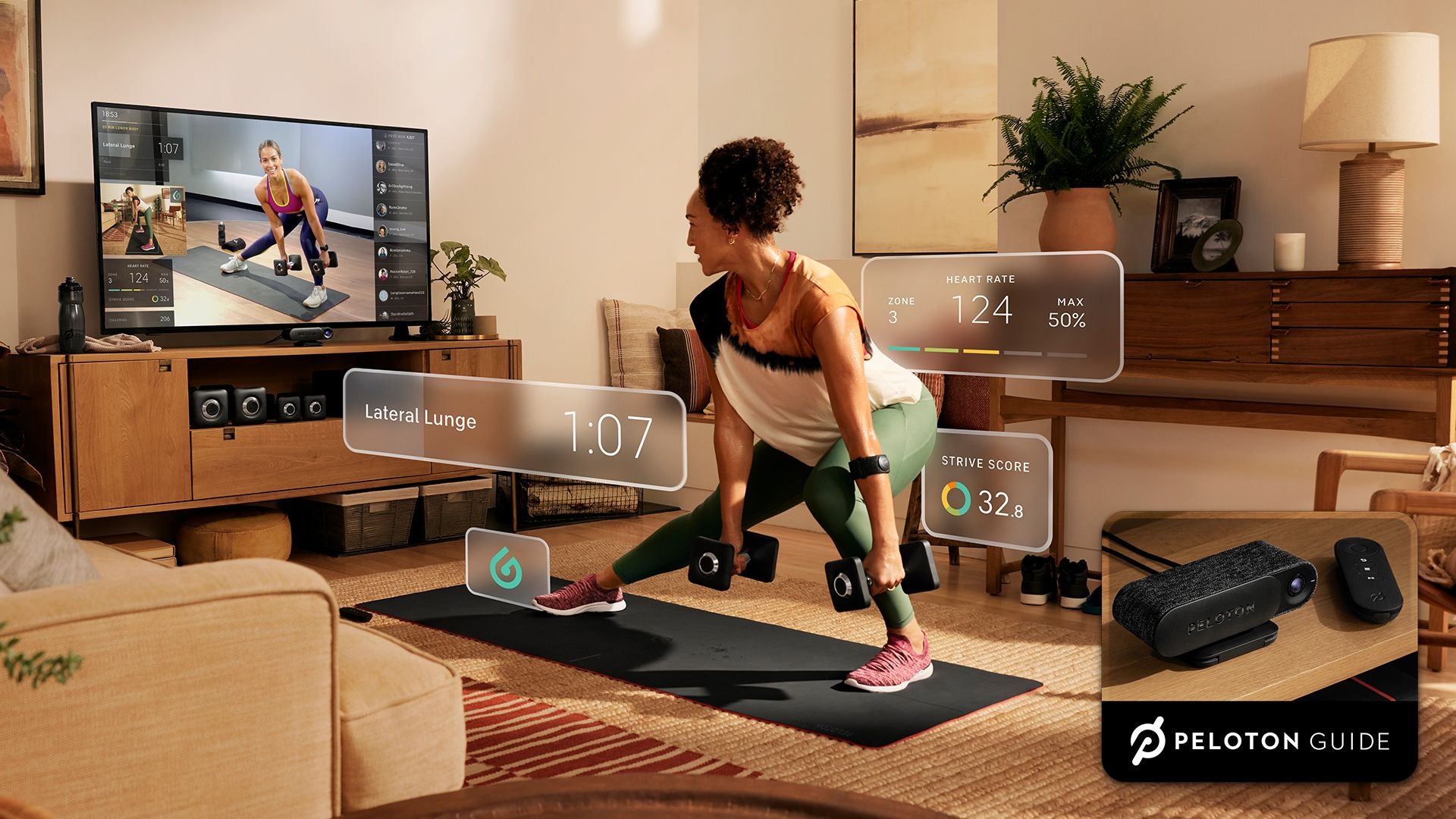Peloton has long been rumoured to be working on a strength-training product, and after the company teased an upcoming launch during its earnings call last week, it seemed like the new machine’s arrival was imminent. Now the $US495 ($667) Peloton Guide is here, but it’s probably not what you thought it would be.
Peloton thrived throughout the pandemic as folks who would’ve worked out in a gym were confined to their homes. Sales of its connected Bike skyrocketed, and the company racked up millions of app subscribers. But after being forced to recall its pricey Tread+ and its then-unreleased cheaper Tread (which has since gone on sale) earlier this year, Peloton’s revenue took a hit. Now it seems like the company’s growth has leveled out — i.e. the conditions that led to its wildly successful 2020 can’t possibly be replicated. The company plans to release new products to appeal to those who don’t want a stationary bike or treadmill (or who don’t want to pay thousands of dollars to work out at home), and Guide is the first of those devices.
Peloton’s first foray into (relatively) affordable fitness isn’t the Tonal or Tempo competitor some had expected. Instead, Guide is an AI-powered camera that tracks your movements as you exercise and gives you credit for following along with the class instructors. How it works: The Guide connects to your TV with an HDMI cable. Once you power it up and log into your Peloton account, you’ll see an interface similar to the ones on the Peloton Bike and Tread, where you’re greeted with live strength workouts and on-demand content from Peloton’s library. From there, you can dive into Peloton’s strength-training classes, just like you can using the Peloton app on a TV. The Guide’s camera enables two things you won’t get using the Peloton app: Movement Tracker, which Peloton says “encourages members to complete the demonstrated exercises and follow the instructors for the entire class,” and something called Self Mode, which effectively shows you an on-screen feed of yourself working out next to the instructor so you can compare your form to the expert’s presumably better form.

Peloton declined to give more detail on how Movement Tracker works, so it’s unclear exactly how the machine learning-powered feature is analysing your movement or how it’s giving you credit. In the Peloton-provided image above, the Guide doesn’t appear to calculate any sort of output for a leaderboard — instead you see a list of other users taking the class to the right of the screen, as you typically do with the strength sessions in the app. You can also see the specific exercise being performed on screen, as well as your heart rate and something Peloton calls a Strive Score.
You’ll need to pair a heart rate monitor to view your heart rate and Strive Score, and Peloton is including a new one with the Guide. This isn’t a Fitbit or Apple Watch type of wearable; it’s more of a Scosche-like heart rate-monitoring armband designed solely to track your heart rate. (Peloton already has a heart rate monitor, but it’s a chest strap. Peloton Redditors regularly complain that it sucks, so it’s unclear if the armband will be any better.) The Strive Score is calculated based on the time you spend in each heart rate zone while working out, and it works with any Bluetooth heart rate monitor you pair with a Peloton device. I use an Apple Watch with a Peloton Bike+ and see my Strive Score during cycling classes, and while it’s useful for seeing how much effort I exert during a workout, it’s also personal and varies from class to class (i.e. it’s not a score you can use to compare or compete with other users).
The Peloton Guide will also offer up recommendations for classes based on previous workouts to help you plan an efficient way to work each muscle group. This feature, called Body Activity, sounds incredibly useful and I hope it rolls out to all Peloton products.
The Guide comes with a remote for stopping, starting, and skipping classes, and the device can also be controlled via voice. The Guide has a microphone that can be physically disabled with a switch, and its camera lens can be covered with a shutter. Peloton’s other devices also have built-in camera lenses with physical shutters, though those cameras don’t have any AI features.
Peloton’s strength-training expansion isn’t out of the blue — the company has 12 strength instructors (many of whom do double duty teaching running or cycling classes) and the company has an existing library of hundreds of on-demand strength classes. If you subscribe to the Peloton app or already have a $US39 ($53)/month all-access subscription for using with a Bike or Tread, you already have access to Peloton’s whole strength-training library. And that’s what makes the Guide a little weird. The casual weight-lifter doesn’t want to spend close to $US500 ($674) just for form analysis, and folks who really care about form probably work out with a trainer in person at a gym. Unlike Tonal or Tempo, Peloton’s new home workout device doesn’t come with any equipment, so you’ll have to bring your own weights. You’re essentially paying for the Guide’s Movement Tracker and Self Mode — and whether those features are worth hundreds of dollars remains to be seen.
The Peloton Guide will be available early next year in the U.S. and Canada and will roll out the UK, Germany, and Australia later in the year. If you don’t already subscribe to Peloton’s app, a Guide subscription with access to strength-training classes, Movement Tracker, and Self Mode will cost you $US13 ($18)/month for up to five people on top of the price of the device.
